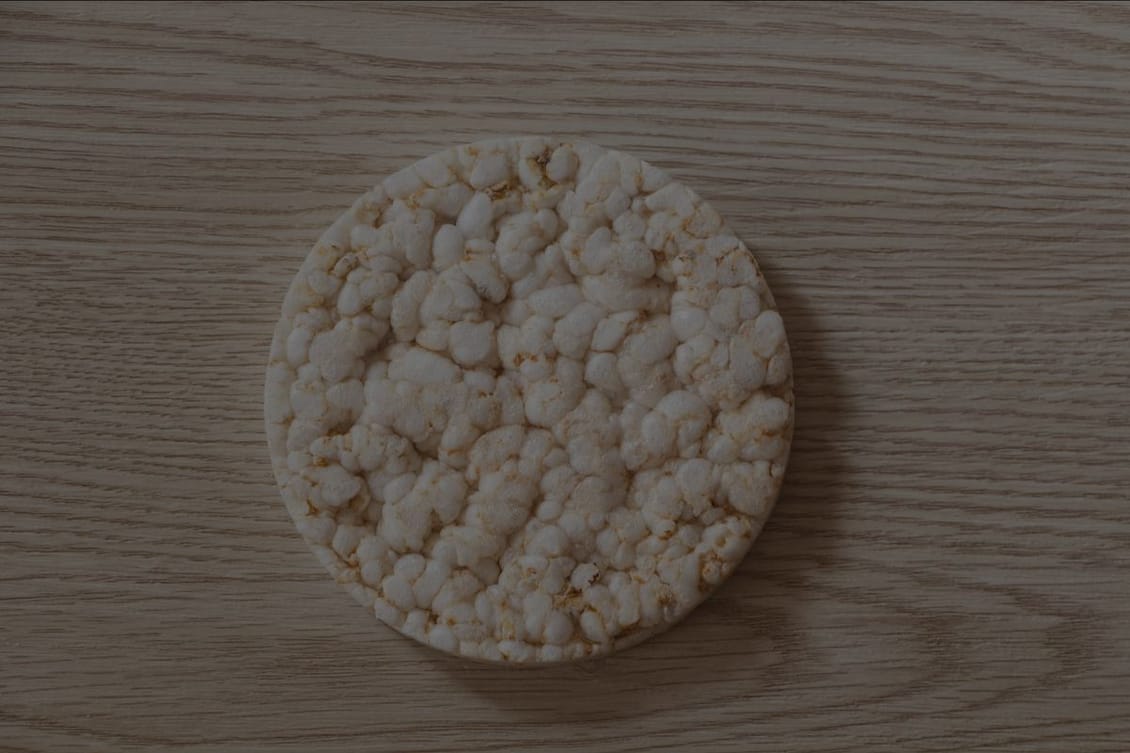
During the low-fat diet hype of the 1990s, rice cakes skyrocketed in popularity.
Not just low fat, they’re also a low carb, low calorie and low cost snack option to replace more calorie dense foods like crisps and potato-based foods. And when the rise of gluten avoidance became mainstream, rice cakes were marketed as an alternative to bread – albeit without the same soft, irresistible texture.
Over the years, rice cakes have held their own in a crowded health food market, competing for valuable shelf space against other alternatives like crackers and crispbreads. To stay competitive, producers have diversified the original rice cake offering – by bringing new flavours (sweet and savoury) to market.
But when you peel back the added flavours, fun packaging and clever advertising…aren’t we just talking about grains of rice?
Rice is rice. But while rice cakes have come to the forefront of health food marketing, they’ve actually been around for longer than you think – and they’re a core part of diets in some cultures around the world.
The general concept of a rice cake has been around for as long as rice has existed – more than 7,000 years.
And although the origin of rice dates back as far as China 2800 BC, it was during the Nara Period when China had a big influence on Japanese culture. It was during this time that rice-based cakes called ‘mochi’ were eaten by the upper classes. In the centuries after, rice cakes went from being treats for society’s most privileged, to being sold by roadside vendors and enjoyed at festivals alongside fish and vegetables.
Today, rice cakes continue to move with the times. Novel flavours make them a tasty snack for the masses, and their robust design makes even the plainest rice cake an excellent vehicle for a wide range of personalised toppings.
And in some cultures, rice cakes are…well, rice cakes.
It’s popular in Chinese culture to celebrate the New Year with sticky rice balls, rice sweets and a rice cake: steamed rice mixed with sugar, milk, fat and different paste flavourings to suit the palate, before being boiled, fried or baked.
What happens when you partner rice cakes with technology?
You save lives.
Yes – really.
A team at the Swiss Federal Institute of Technology (EPFL) have used rice cakes to create an edible drone.
It’s part of a wider project about edible robots for humans and animals, called RoboFood. Used in emergency situations, drones can deliver vital food and medicine to remote locations; and as well as carrying supplies, an edible drone offers a caloric boost to the recipient, maximising valuable flight weight.
Using a laser cutter, round shapes are cut from rice cakes and connected together using gelatin to create rectangular wings – making them robust enough for flight. And those wings account for 300 calories per 70cm.
As each drone flight would only be a one way trip, the EPFL team is determined to make the drones as environmentally friendly and nutritious as possible. And an edible drone offers a logical solution: reducing any debris left from each flight and increasing the nutritional load. The team are also looking at how they could replace other parts of the drone with something edible to increase the nutritional value even more.
The project lead, Bokeon Kwak, told IEEE Spectrum:
“We can expand the design criteria to contain higher calories by using fat-based material—for example, edible wax; fat has higher calories per gram than proteins and carbohydrates. On the other hand, containing more calories also implies the increase of structural weight, which is a price we need to pay toward higher calories.”
Innovative experiments aside, the future for rice cakes as part of daily diets looks bright.
In 2022, the global rice cake market was worth USD $519 million. Growing at a CAGR of 4.33%, it’s expected to reach $729.52 million by 2030.
Our world population is growing too. By 2050, the global population is set to reach 9.7 billion people, all of whom need to be fed. Rice is known as a cost effective source of nutrition – and in the right conditions, growing rice is relatively straightforward.
It does, however, take significant resources. A kilo bag of rice takes about 2,500 litres of water to make it to your cupboard – which is a major challenge in a world that’s facing unpredictable weather conditions and rising temperatures.
Rice is grown in warm, waterlogged fields known as ‘paddies’ and farmers flood the paddies during the growing season. Although this creates ideal conditions for rice to grow, it uses a huge amount of water – about a third of the world’s irrigation water, in fact. And this practice also creates perfect conditions for microbes that release methane into the atmosphere, damaging the ozone layer and contributing to global warming.
One possible solution is to rely more heavily on high-yielding aerobic rice varieties. These grow in non-flooded, upland conditions, and require less water to thrive.
But more research is needed to protect rice production – and ensure that our snack bags remain well stocked with nutritious, delicious, and highly convenient rice cakes.
Love them? No – eating a rice cake is like eating cardboard? Depends on the flavour?
Join us at InFlavour 2024 to get ahead of the curve with the latest market segment developments in F&B. We can’t wait to see you there.
Take your seat at the InFlavour table, a government-backed and world-leading B2B food event by Tahaluf.
E-mail address SubmitWant to keep up to date with all our latest news and information? Enter your name below to be added to our mailing list.
E-mail address Submit